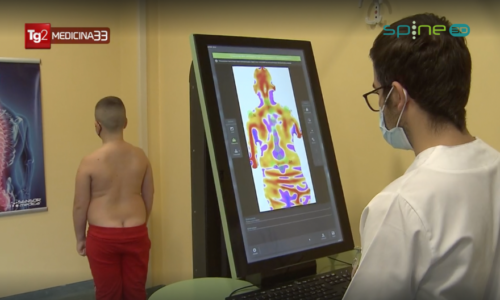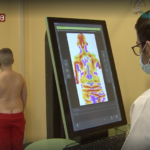
More on cervical pain
- admin
- October 31, 2022
- Neck, Posture
- Antalgic, Anti-inflammatory, Back pain, Cervical Spine, Fitness, Neck Pain, Physiatrist, Posture
- 0 Comments
A few days ago we talked to you about cervical pain and tried to shed some light on the terminology, which is often unclear to non-physicians. Today we take up the subject again and take a closer look at what the symptoms of cervical pain are, whether and how it can be prevented, and then some hints on diagnosis and possible treatments. Obviously, this article is for information purposes only and the recommendation is always the same: consult your family doctor, who will also be able to indicate the need for a specialist examination if necessary.
Cervical pain: what are the symptoms? Can it be prevented?
Cervical pain manifests itself as localised pain in the neck, mainly in the back. Pain that can radiate along the muscles of the spine and shoulders. In more complex cases, the discomfort may also reach the arms, but this is less frequent.
In some cases, these pains can be prevented. Especially if the pain is caused by muscular problems. In this case, the first step is to maintain a correct posture, the neck straight and always in line with the body, thus trying to avoid bending the head forward.
Most of these problems arise at work, especially when working long hours at the computer while sitting at a desk. In these cases, it is useful to check your position often and adjust it accordingly.
Another very useful tip is to try not to maintain an incorrect position at night, Avoid lying on your stomach with your head turned to the side. This is a habit that in the long run creates several problems for our neck.
Diagnosis
Who can accurately diagnose cervical pain? The physiatrist specialist. In order to diagnose neck pain, the patient undergoes a specific examination in which the doctor will gather all the necessary information and at the end will be able to assess the need for examinations. Examinations, among other things, that today, thanks to the non-invasive Spine 3D technology, can be performed in complete safety.

And afterwards? What happens?
If we are faced with pain caused by faulty posture, stress or poor physical fitness (so we are talking about problems whose nature is certainly not worrying, what we call ‘benign’ in nature) we will certainly go through a series of exercises (always indicated by the specialist) that we can carry out, even on our own, at home. Obviously, it will also be necessary to correct our posture, the cause of the pain.

Faced with acute pain, the specialist will most probably prescribe anti-inflammatory drugs, sometimes in combination with muscle relaxants. Also not excluded in these cases is antalgic mesotherapy, a subcutaneous injection with a very small, thin needle of small quantities of medication that act directly on the affected part and which would lead us to reduce the use of oral medication.
But there are also more specific cases in which the physiatrist can perform spinal manipulations and prescribe specific massage therapy or physiotherapy treatments in conjunction with this. There are few, but far more significant, cases in which surgical intervention will be deemed necessary.
In any case, we repeat again, because it is the fundamental aspect, in case of pain do not hesitate to contact your doctor. Your health should never be underestimated.






